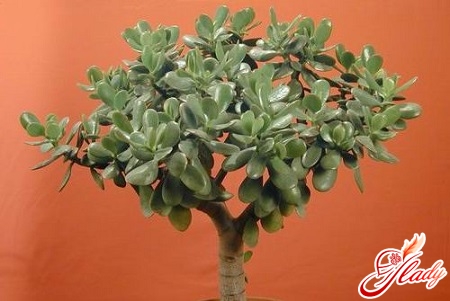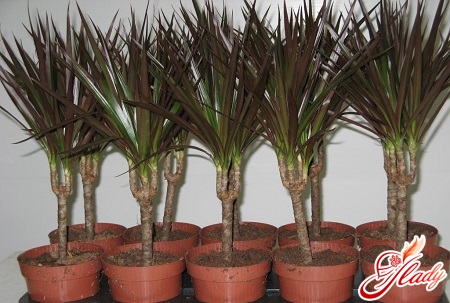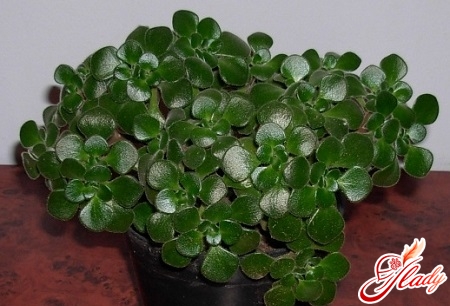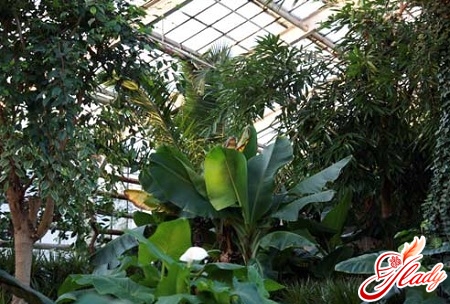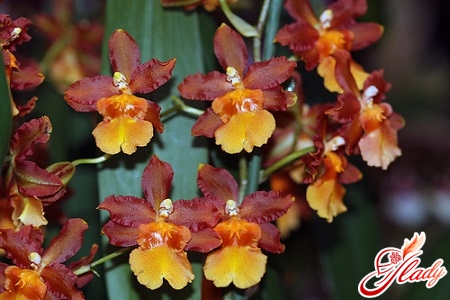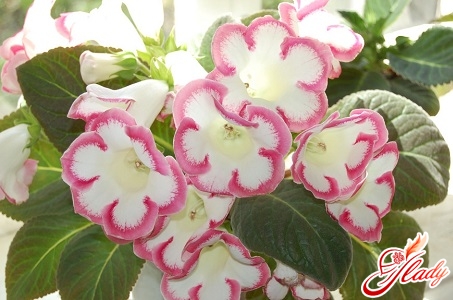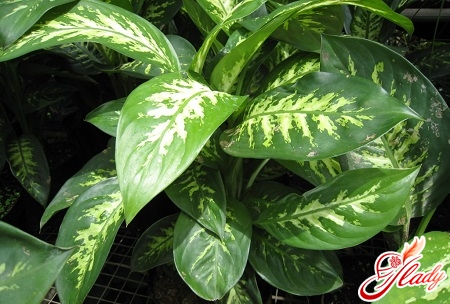 Dieffenbachia is a room evergreen plantfamily of aroids, possessing a strong trunk and expressive leaves. In total, this genus includes about forty species at the moment. The homeland of the diffenbachia is the tropics of America, and its name was given in honor of the famous German botanist Joseph Dieffenbach. On the basis of the type of diffenbachia that refers to, the color of its leaves may differ. They can be white or green, have spots, stripes or a thin edging and many other shapes. If you keep the plant in the right conditions and properly take care of it, then it can please you with flowers that look like cobs wrapped in a white and green "veil". Room diffenbachia can reach two meters, again, depending on the particular variety. This plant is extremely sensitive to external sources - it is very important to create the necessary conditions for active growth. Generally speaking, diffenbahia needs frequent watering and spraying, it does not tolerate drafts and significant temperature changes. When purchasing a flower, pay attention to such a nuance as the toxicity of juice, which not only can cause skin irritation, but also cause temporary dumbness when ingested. Known and healing properties of the plant. Dieffenbachia is often purchased at manufacturing plants, because it cleans the air of such heavy toxins as benzene, xylene and formaldehyde perfectly. Well diffenbachia copes with other harmful substances. By the way, Dracaena differs in the same way. In general, by themselves, indoor plants make it possible to create a special, natural atmosphere in the room.
Dieffenbachia is a room evergreen plantfamily of aroids, possessing a strong trunk and expressive leaves. In total, this genus includes about forty species at the moment. The homeland of the diffenbachia is the tropics of America, and its name was given in honor of the famous German botanist Joseph Dieffenbach. On the basis of the type of diffenbachia that refers to, the color of its leaves may differ. They can be white or green, have spots, stripes or a thin edging and many other shapes. If you keep the plant in the right conditions and properly take care of it, then it can please you with flowers that look like cobs wrapped in a white and green "veil". Room diffenbachia can reach two meters, again, depending on the particular variety. This plant is extremely sensitive to external sources - it is very important to create the necessary conditions for active growth. Generally speaking, diffenbahia needs frequent watering and spraying, it does not tolerate drafts and significant temperature changes. When purchasing a flower, pay attention to such a nuance as the toxicity of juice, which not only can cause skin irritation, but also cause temporary dumbness when ingested. Known and healing properties of the plant. Dieffenbachia is often purchased at manufacturing plants, because it cleans the air of such heavy toxins as benzene, xylene and formaldehyde perfectly. Well diffenbachia copes with other harmful substances. By the way, Dracaena differs in the same way. In general, by themselves, indoor plants make it possible to create a special, natural atmosphere in the room.
The basic rules for the care of the Dyrenbenbach
- Room lighting
Dieffenbachia does not accept direct rays. That is why the plant does not grow in the bright sun. Those species that differ in brightly colored leaves need more scattered light than species with ordinary green leaves. In the case of a lack of light, the leaves of the diffenbahia may lose their particular decorative and expressiveness. Dark green varieties will feel wonderful in the corner of the room, in the depths, but, at the same time, the presence of artificial lighting is mandatory.
- Temperature conditions
In the beginning it was already said that the plant does notcarries drafts and temperature jumps. In the spring and summer, the diffenbachia should be kept at a temperature of 21-25 degrees. In winter, the optimal regime will be 18-20 degrees. Be sure to pay attention to such nuances, otherwise negative consequences for the plant are possible.
- Watering
Use for watering soft water, infusedday. In the autumn and winter, watering the diffenbachia is necessary two days after the top layer of the soil has dried. In the period from March to August, you need abundant, good watering. But try not to fill the plant - observe the optimal balance. If the soil experiences excessive moisture, the diffenbachia will discard the leaves.
- Humidity
Regularly spray room diffenbachia,Wash the leaves weekly. You can arrange a plant and a "summer shower". To do this, close the soil in the pot with a cellophane film with holes and water it from the watering can. If the dimensions of the diffenbachia are not so great as to make such a shower, then simply wipe the leaves with a soft cloth.
- Proper feeding
Active growth of the plant is observed inspring-summer season. It is then necessary to fertilize diffenbachia three times a month, using half the volume of a specific fertilizer. It is worth choosing those fertilizing, which in its composition have lime. Fertilizing organic plant, do not forget that varieties that have white leaves, can turn green due to an overabundance of nitrogen. Especially if the diffenbachia does not receive enough light. In general, such species are better fed with mineral substances about once every three weeks.
- Falling leaves
In the process of growth, the plant bare and beginsactively discard the lower foliage. For this reason, the Duffenbachia must be rejuvenated, for which the top of the plant is cut off (2 cm below the node). After cutting, it is necessary to wash off the milky juice and wipe it with a napkin and lightly powder it with crushed coal. This will allow the plant to acquire young leaves.
- Transfer
When is it necessary to transplant a dienenbachia? Then, when the pot is filled with roots. It is best to transplant from February to May. If the diffenbachia grows rapidly, then a summer transplant will be necessary. In this case, transshipment is recommended without affecting the earth coma. Both transplanting and transshipment requires a larger pot and a new drainage layer. The soil must necessarily pass air and moisture. If the water is densely retained in the substrate, then sooner or later the roots will die. In addition, the plant will be affected by the infection, leaving the leaves covered with painful spots. It is better to apply a weakly acidic substrate, where to add grated charcoal (woody). At the bottom of the new pot, pour the expanded clay - this will allow excess moisture not to linger in the soil layer.
- Virulence
We have already said that the diffenbachia has a poisonousmilky juice. It causes rashes, severe irritation, swelling of glands, tongue, and this is not the whole list of possible reactions. Work extremely carefully with the plant. When transplanting it or multiplying it, use rubber gloves. After work, wash your hands thoroughly with soap and water. 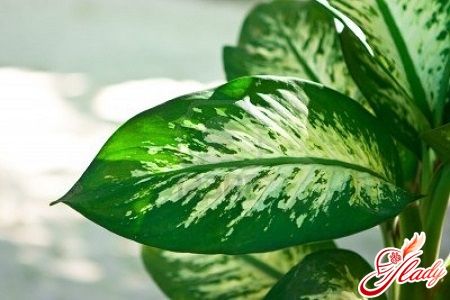
Difficulties in growing dienenbachia
Any houseplants during the growth period canto face a number of problems. Dieffenbachia is no exception. Of course, if the proper conditions are not observed, it can become ill, which will manifest itself in the deterioration of the appearance. For example, if you do not water the diffenbachah regularly, then it can discard the lower leaves. The second reason may be the wrong size of the pot. If you observe that the tips of the leaves of the plant dry up, then the cause is harder to identify. It can be, as well as temperature changes, and insufficient humidity of air, poor-quality drainage or frequent drafts. The reason may be the spraying of the diffenbahia in the dark. Avoid this to prevent the foliage from drying out. Is the color of the leaves dull? Perhaps, the plant lacks light or some trace elements, phosphorus or potassium. This can be affected by excess nitrogen in the substrate, which has already been said. If the leaves themselves grow small, and also lose their original shape, then reduce the amount of alkali in the substrate - then diffenbachia will acquire the original form. Another problem - the rotting of the stem, manifested in the loss of color and elasticity. This can be a low temperature or soil silt. At the beginning of the disease, just cut out the rotting part and rub the damaged area with coal. If this is not possible, then cut off the top and root it, and what remains of the diffenbachia will have to be discarded.
The wreckers of the diffenbahia and the fight against them
Despite the fact that the diffenbachia has a poisonousjuice, this does not help it to fight with all the many pests that attack it, in particular, with a scabbard and mite. Periodically, the plant becomes infected with aphids. Spider mite - a red spider - usually appears from below on the leaves. It envelops the leaves in the spider webs. To get rid of it it is possible at the expense of washing of foliage or its spraying, using water in a combination to tobacco infusion and green soap. You can use ground sulfur, which needs to pollinate the underside of the leaves. Sometimes you can use ready-made insecticides. This applies to fighting both mites and shields. Aphids have a different color. It can be black, green, and gray. Aphids, like a mite, like to live on the underside of the foliage, eating the juice of the plant. As a result, you will begin to observe the drying of the leaves and their gradual folding. These insects are rapidly multiplying, so their destruction is best done with the help of ready-made preparations. If you use ready-made insecticides, then carefully follow all the requirements that the manufacturer has indicated on the product package. Try not to exceed or reduce the necessary doses of specific substances. The same applies to the mixtures and solutions you have prepared. And in any case, do not forget to protect the soil with polyethylene while caring for the plant. 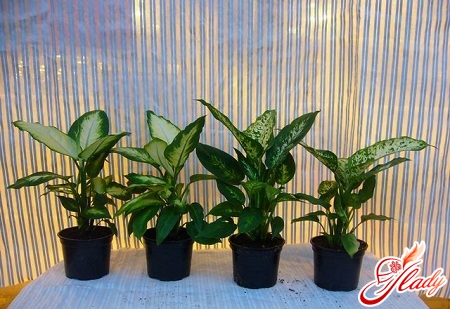
Varieties of Diffenbachia
The most popular species in Russia is considered to beSpotted Dieffenbachia, whose leaves have an oval shape, and their length sometimes can reach 60 centimeters. Color is green with specks, there are also spots of light color, often white, everything depends on the particular flower. The shape of the spots can be different - they can merge into a large spot or be small and scattered throughout the leaf. Another species is Amoena. Has leaves of a dark shade on which the nature has put a marble pattern, located, as a rule, in the direction of the lateral veins. An example of a species can be Tropic Snow, featuring a huge number of stripes and strokes on the foliage. There are a lot of Amoena subspecies, and they are all beautiful and special in their own way. Bausei is a powerful hybrid. The height can reach 90 centimeters. It has leaves of a yellow-green hue with dots on a dark green background. Bausei sheets in length, as a rule, are 20-30 centimeters. One of the most popular subspecies of the plant, which is characterized by some peculiarities of care and maintenance. Diffenbachia Bowmannii stands out among other species in that its leaves can grow to a length of up to 75 centimeters! Foliage is cream or white. The speckles can be either dark or light. Many forms of such a diffenbachia have a brightly expressed white mottled, which looks very beautiful! Pay attention: during the flowering of the plant, the flowers of dienenbachia need additional care, which depends on the particular species or variety of a certain plant.
Methods of reproduction of diffenbachia
Indoor flowers and plants can multiplydifferent ways. In the case of dieffenbachia, there are several main methods. For example, by the apical cuttings of the stem or by means of air layers. Dieffenbachia from the cuttings, as a rule, multiplies in the spring and summer. The process is impossible without phytohormones. You will need wet sand. This type of soil will be most ideal for rooting cuttings. Using a mini-greenhouse will allow you to get the desired result sooner. From May to September, Dieffenbachia actively reproduces due to air layers. An old plant is used here, where the stem is already bare. A small incision (5 mm) is made on it, just below the sheet. Now we take a wet match, which we dip in a special hormonal powder, created specifically for grafting. This match must be inserted into a fresh cut so that it cannot close. You need to wrap the layer with wet moss, and then tie it with raffia. Cover all this with a film on top. After a couple of months, you will begin to notice roots breaking through the moss. Already when the roots get stronger, you can cut off the petiole. It is better to do this below the roots, and then transplant it into a pot. After the air cuttings have separated, the remainder of the stem is divided into cuttings, cutting it into equal parts, each of which should have a dense place where the leaf once was. This place is a peephole. Here the dormant kidneys are still hidden. The stem cuttings should be well sprinkled with charcoal and left to dry for a day. Prepared cuttings are placed vertically in the substrate, be sure to observe the direction of growth. You can lay out the cuttings horizontally, while deepening them only halfway. After watering, these cuttings should be covered with a polyethylene bag or a regular jar. Remember to ventilate the room twice a day. The rooting process will take place at a mode of up to 25 degrees. If the temperature is below 22 degrees, it will not be superfluous to use a heated greenhouse. Actually, these are the basic rules for caring for dieffenbachia. Considering all of the above, you can grow a real miracle in your home. Dieffenbachia is a plant that not only impresses with its appearance, but also has a positive effect on health. As they say, two in one! The choice of varieties and types of dieffenbachia is amazing, so do not doubt that from this whole variety you will pick up a plant for your apartment. It is only important to create for him all the vital conditions.




